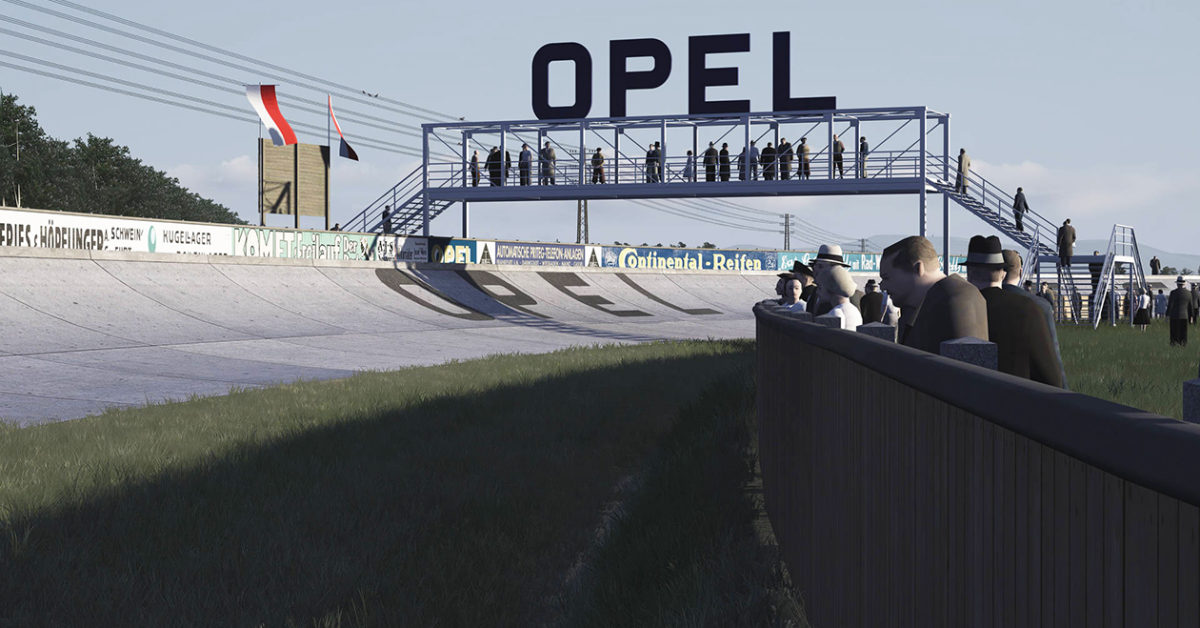If you look closely, you can still see remnants of concrete here and there among the bushes, the banked curves are overgrown with moss, and dozens of tree trunks have grown through the concrete. Today, it is hardly imaginable that the inconspicuous piece of woodland between Rüsselsheim and Trebur was a popular venue for tens of thousands of motorsport enthusiasts a century ago: the site was home to the “Opel Rennbahn” opened in 1920, the first racetrack of its kind in continental Europe, created long before the Nürburgring, AVUS or Hockenheimring.
Thanks to the oval layout, 12-metre width and steep, 32-degree banked curves, average speeds of up to 140 km/h were possible. It is difficult to pinpoint exactly when the very first racing drivers took to the starting line on the 1.5-kilometre-long oval. What is clearly documented, however, is the “1st Wiesbaden Automobile Tournament” that took place on May 21-22, 1921.
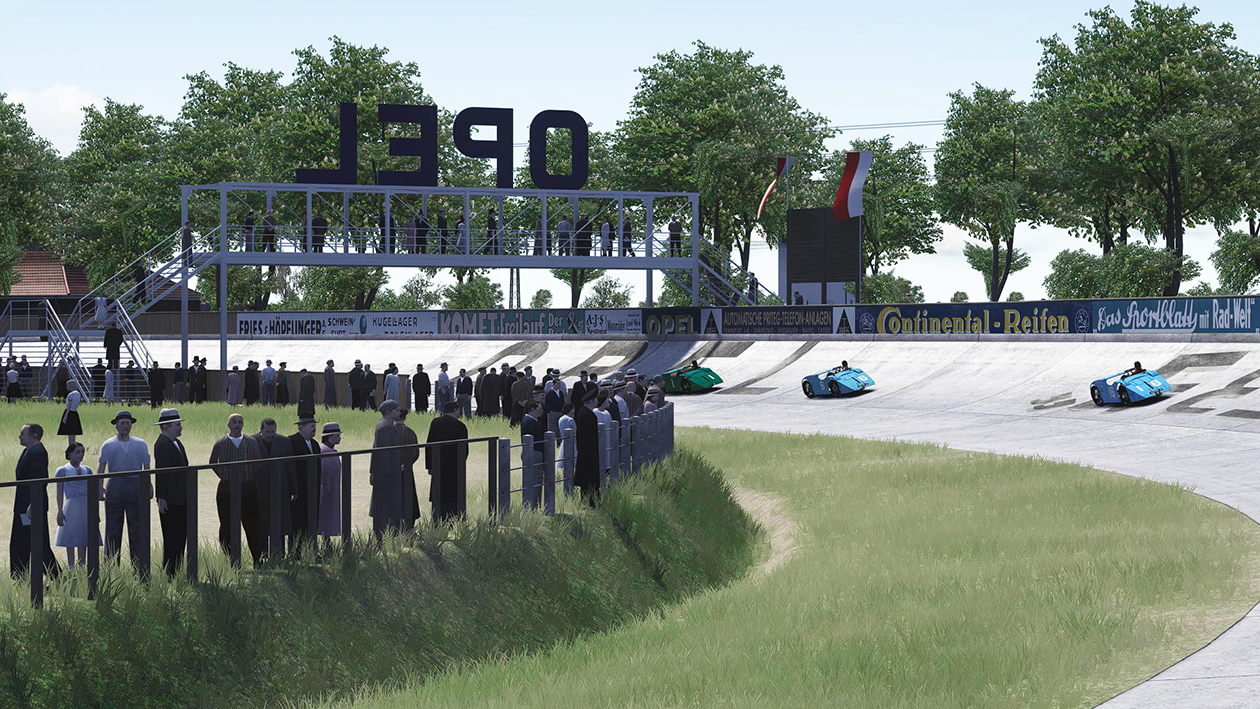
Unique insights into a bygone era: Eight months of work have gone into the simulation so far.
The video enables an unprecedented trip back in time – from the detailed depiction of the track, the grandstands and spectators to the view from the racing driver’s cockpit.
“It appealed to me to bring this historically significant racetrack back to life.”
Thomas Lächele

Experience the oval again
Exactly 100 years later, the Opel track is now coming back to life – at least virtually. With detailed depictions of the grandstands, the spectators and, of course, the oval itself, one can experience the track in its original form and even in action for the first time – thanks to a video based on a virtual racing simulation. This labour of love stems from two enthusiasts whose paths crossed by chance. One is Thomas Lächele from Upper Bavaria. His profession is the virtual creation of historic racetracks.
The other is Carsten Ritter from Groß-Gerau, a member of the “Opel Rennbahn Cultural Heritage Site Initiative”. When Carsten Ritter came across a first test version of Thomas Lächele’s racetrack by chance on the internet in the late summer of 2020, it was to be the start of a cooperation that created such a detailed simulation of the oval that the pictures and scenes magically transport you back to the days of the Golden Twenties.
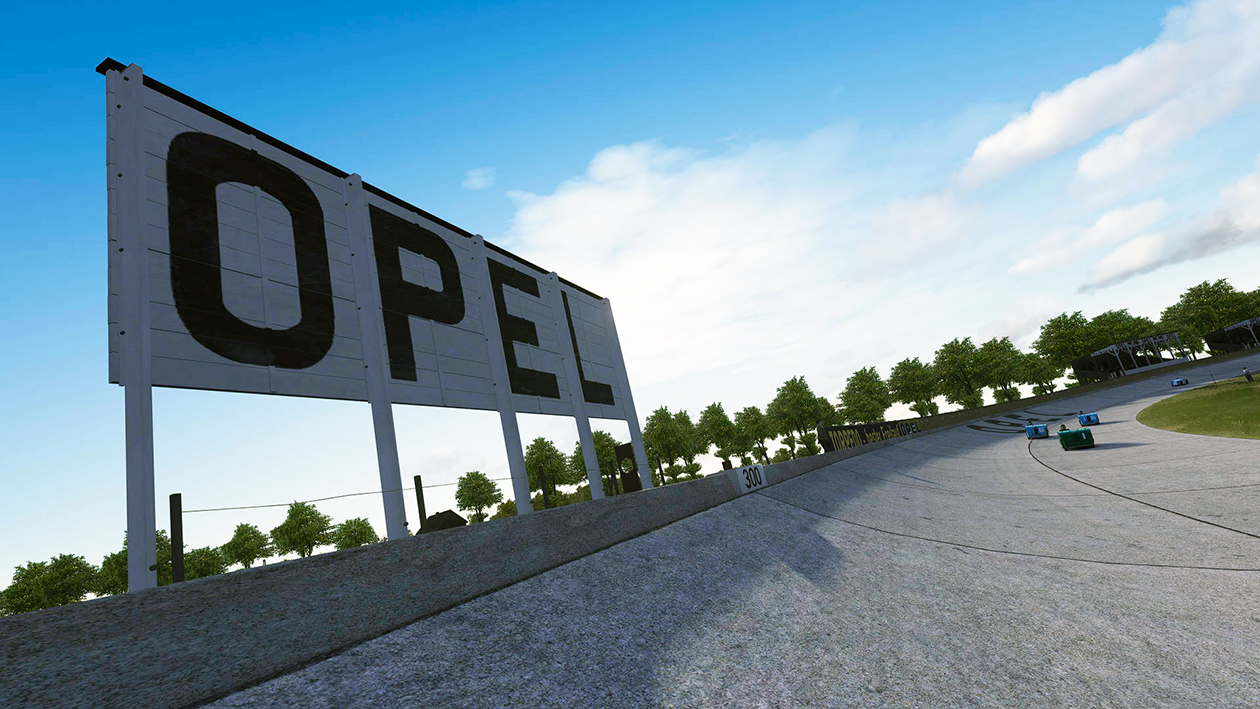
Gaming trend: “Sim racers” like Thomas Lächele search for the most realistic racing experience in the virtual world.
“Hot spot” of the motorsport world: The simulation gives an incomparable impression of what it must have been like back then.
Night mode in progress: The light intensity still needs to be adjusted; the position of the floodlights is already correct.
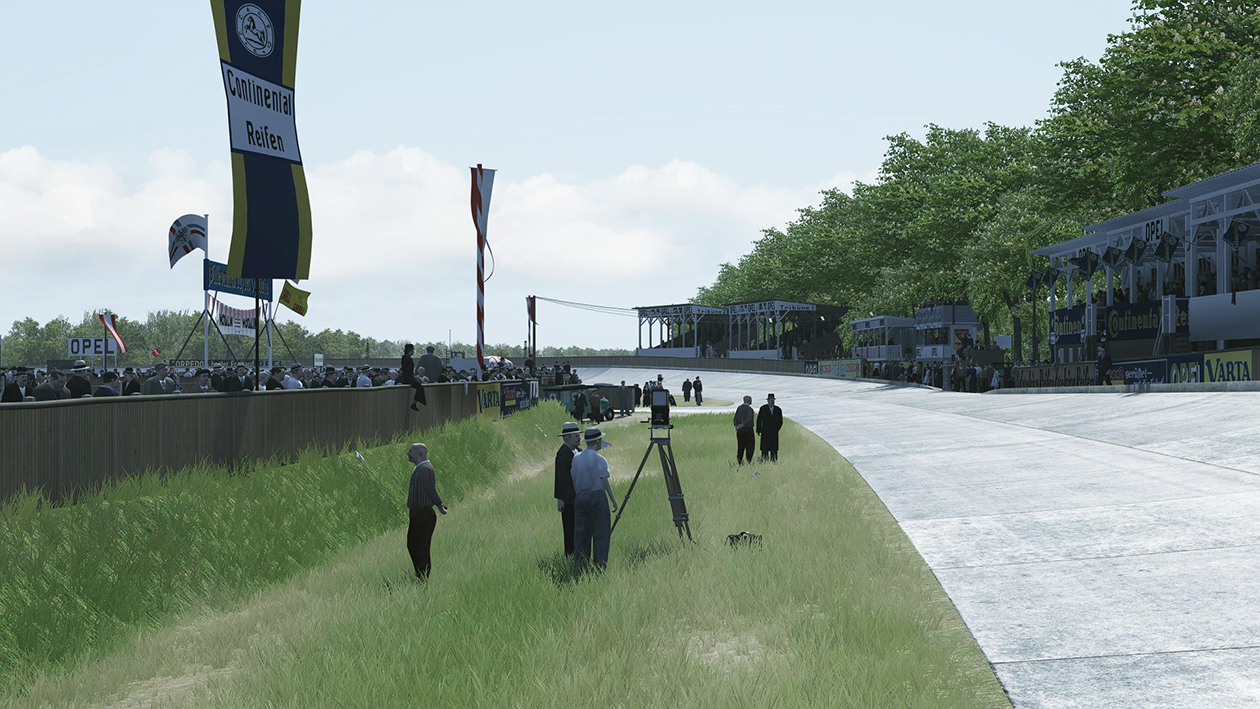
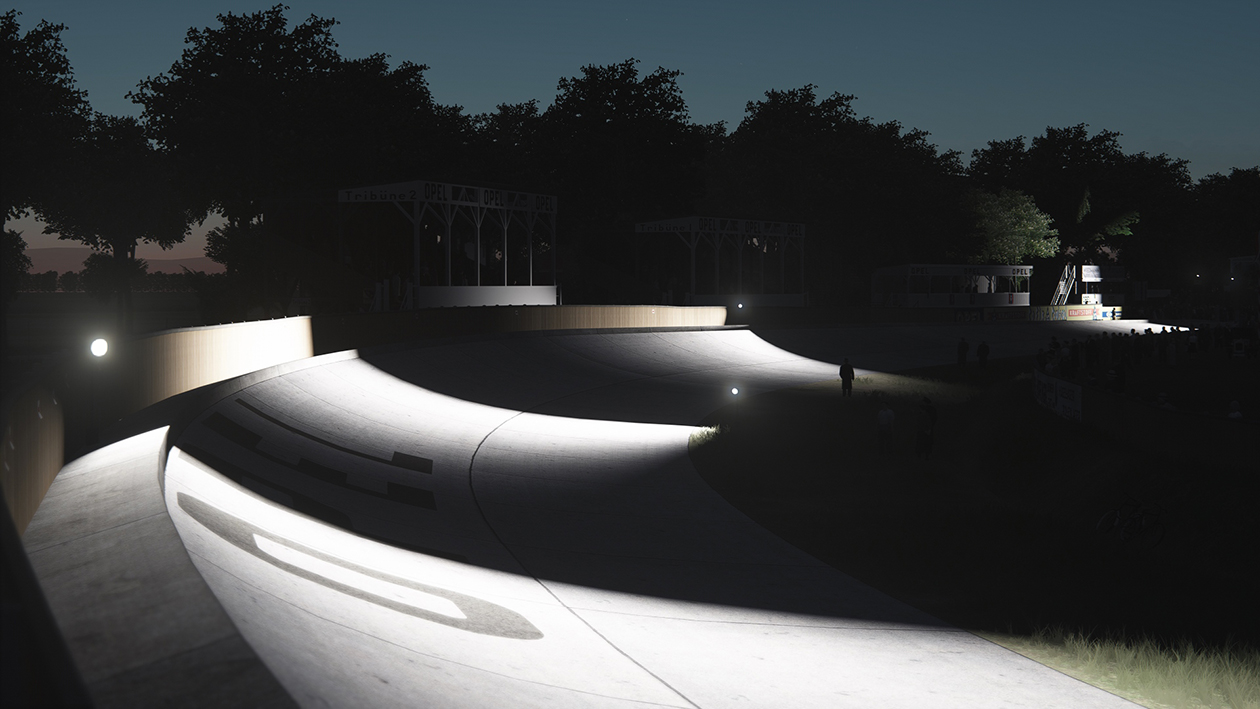
Racing simulations
are extremely popular
As a user of racing simulations, also called “sim racer”, Thomas Lächele has been searching for the most realistic racing experience in the virtual world for 15 years now. He thus belongs to a rapidly growing community; sim racing is considered the hot trend in the gaming sector. The number 1 in racing simulations is called “Assetto Corsa”. What is special about it is that the simulation is editable, meaning players can create tracks and vehicles virtually and make them available to all users. The 37-year-old from Upper Bavaria has already perfected tracks such as the legendary Hockenheimring circuit. “My speciality is actually the surface structures,” he says in a telephone conversation.
When he found a few pictures of the Opel Rennbahn on the internet last summer, Thomas Lächele decided to venture the creation of his very own simulation for the first time, “to bring the historically significant and apparently forgotten oval back to life”. Based on the researched images, he built a first version. But from Upper Bavaria, his research possibilities were quickly exhausted. “When Mr. Ritter contacted me, it was a real stroke of luck,“ he says.
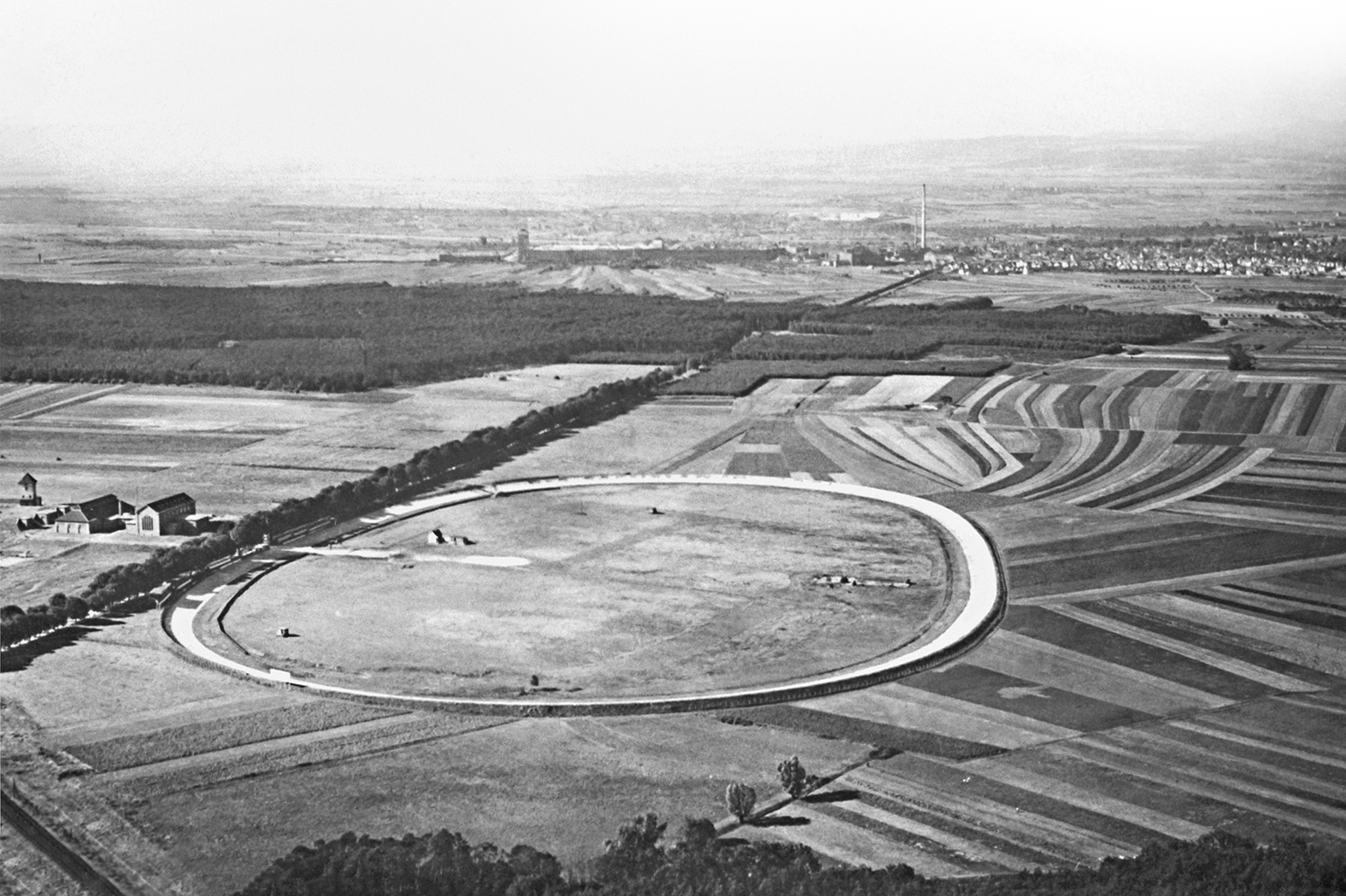
Aerial photo from 1928: Unlike modern racetracks, you won’t find any crash barriers, gravel traps or run-off areas here.
The first racetrack on the continent: The Opel Rennbahn went into operation years before the Nürburgring, AVUS or Hockenheimring.
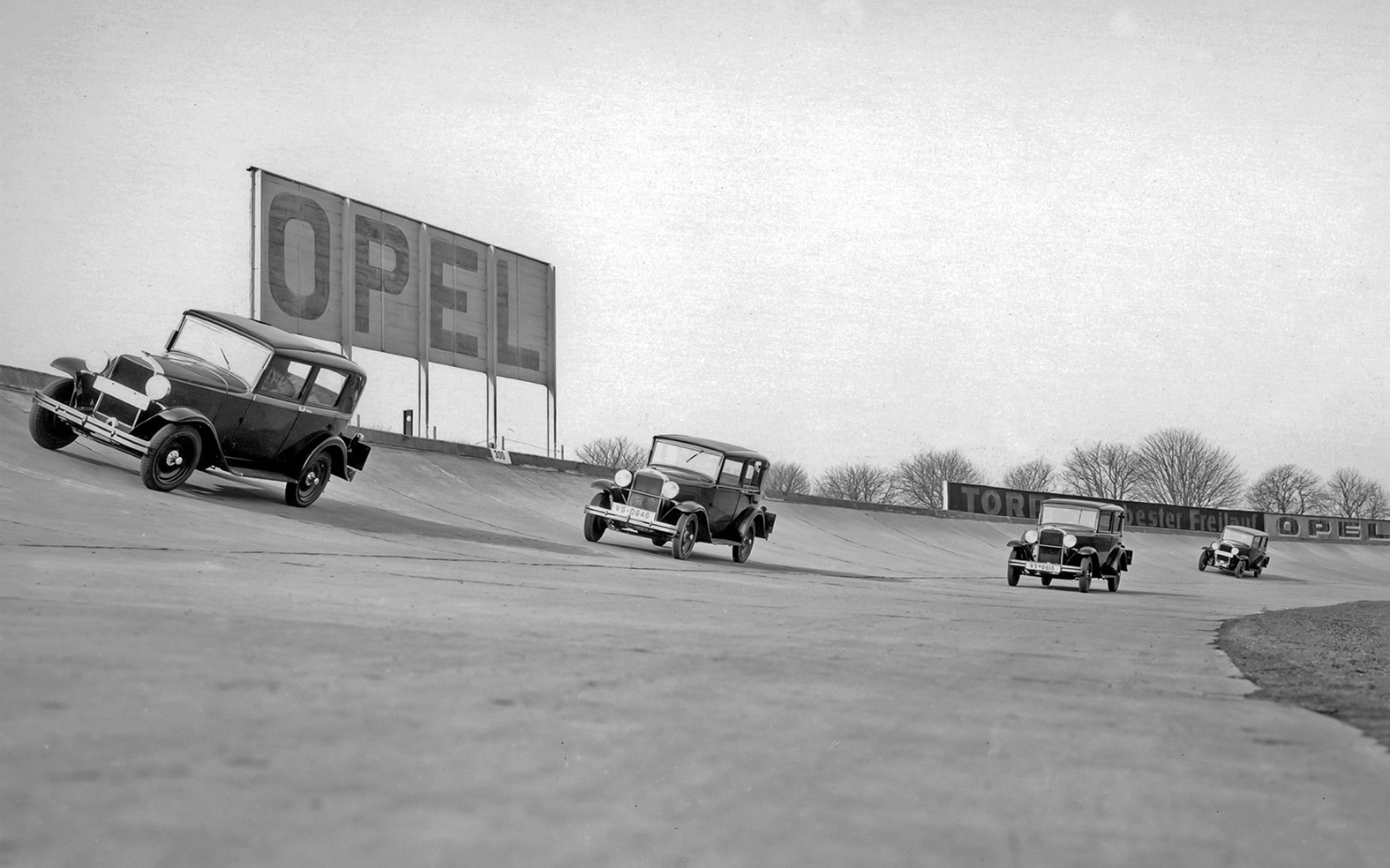
“Driven by the prospect of resurrecting the Opel Rennbahn,
I intensified my research.”
Carsten Ritter

How you can experience
the Opel Rennbahn as a simulation
The base racing simulation “Assetto Corsa” must be purchased once (€19.99). All other features and downloads are free of charge. The racing simulation runs on the gaming platform Steam. The simulation of the Opel Rennbahn can be downloaded free of charge after registering on Racedepartment. Additional programmes can also be used to add special features such as night lighting or seasons to the simulation.
With a lot of attention to detail
And so, since September 2020, emails with the subject “Opel Rennbahn – new details” have been regularly sent back and forth between Groß-Gerau and Mühldorf am Inn. As a member of the Opel Rennbahn Initiative, Carsten Ritter is a true aficionado anyway. “Driven by the prospect of being able to resurrect the track in such detail, I intensified my research once again,” says the 49-year-old. He is regularly on site in the wooded area between Rüsselsheim and Trebur, surveying, photographing and documenting the remaining pieces of concrete track and passing on his findings to the 3D specialist a good 450 kilometres to the south.
“Opel did real pioneer work,” says Ritter. The track consists exclusively of curved segments and does not have a single straight line. “Every single concrete element of the track was individually produced with the help of a template and the concrete was poured using a special wet-on-wet technique,” explains Ritter. The unique track layout was thus created from hundreds of concrete parts. “Even on the computer it was tricky to recreate the radii. How they did it in reality at the time is still a mystery to me,” says Thomas Lächele.
Help from the Opel archive
The two protagonists complement each other perfectly, goad each other on to extraordinary efforts. One example: when Carsten Ritter digs up more details about the lighting of the world’s first 24-hour motorbike race, which took place on the Opel Rennbahn, Thomas Lächele starts simulating the night-time scenery on the concrete. And so every detail of the race simulation – from the trackside advertising to the height of the concrete wall at the edge of the track – is gradually fine-tuned and simulated to the centimetre. Lächele: “I have received so much detailed information that I would never have got without the help of the Initiative and of the Opel archive.”
The process of reconstructing the track has not yet been completed, explains the passionate 3D modeller. “With many new photos, more details are coming to light that require readjustment,” says the media designer. Therefore, the current version available on “Assetto Corsa”, which took eight months to create, is not yet the final one. But this version already conveys an incomparable impression of what it must have been like back then, when thousands of spectators flocked to the now wooded location between Rüsselsheim and Trebur to see their racing idols.
Interim status: This screenshot from the 3D programme shows the simulation without textures, which will be added in a next step.
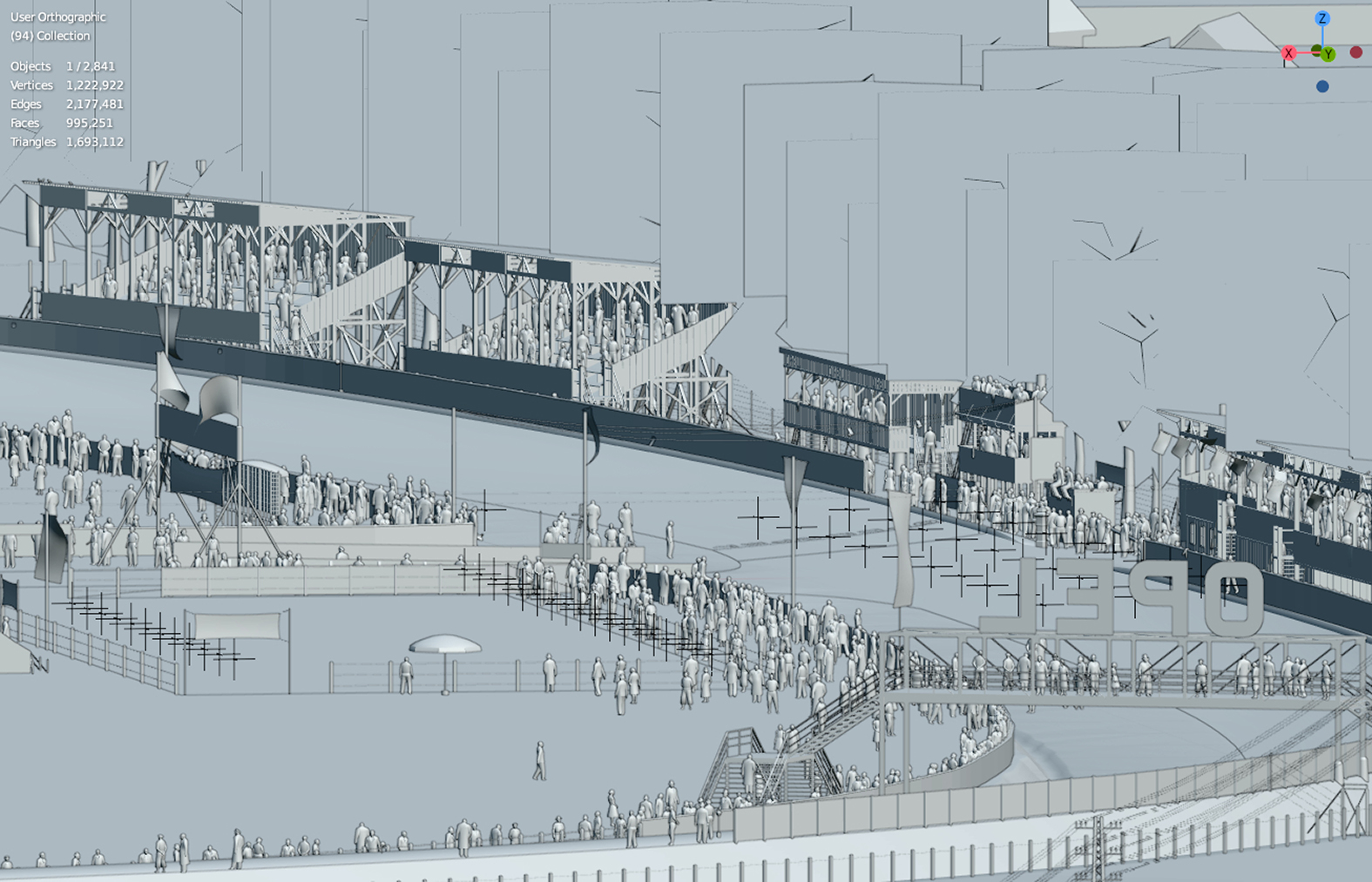
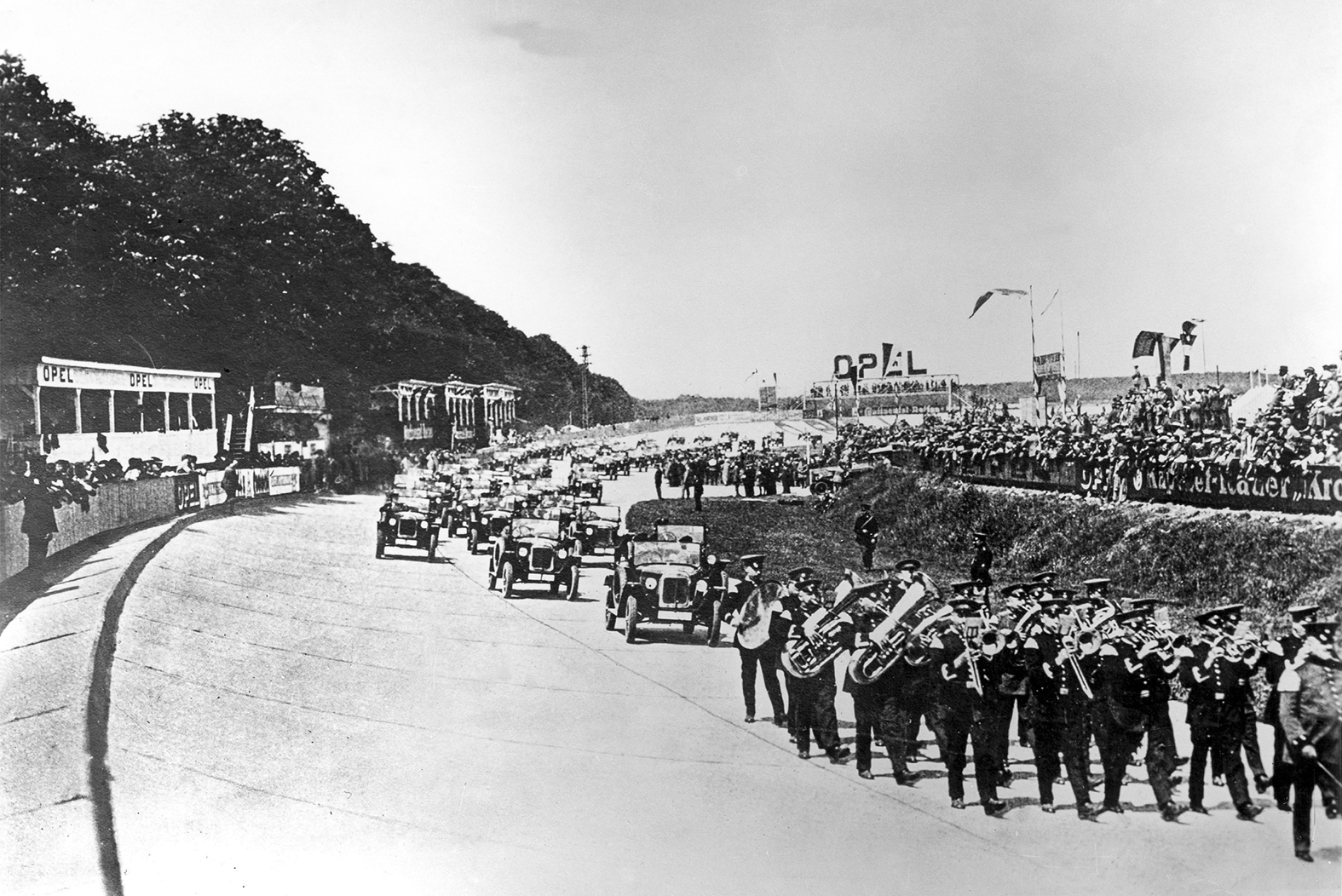
Effective advertising: In 1925, Opel had a day’s production of the “Laubfrosch” driven around the oval accompanied by the Opel works orchestra.
Fritz von Opel was
one of the stars
Like the races on May 21-22, 1921 at the “1st Wiesbaden Automobile Tournament”. According to contemporary reports, which Carsten Ritter – also an aficionado and enthusiast of the 1920s – carefully researched, twelve competitions for automobiles and motorcycles took place then over various distances up to 90 kilometres. Opel machines competed in the majority of races – with great success. Fritz von Opel – the grandson of company founder Adam Opel and a visionary sportsman – and Opel works driver Carl Jörns were at the controls. Driving the Opel 14 PS, Jörns scored two race wins and Fritz von Opel, who reached an average speed of 113 km/h, crossed the finish line once before anyone else. The planned 13th race comprising record attempts for cars and motorbikes had to be cancelled, because of the “reckless behaviour of the spectators”.
Not only virtually,
but also live on site
Today, 100 years later, the Opel Rennbahn is a “technical cultural heritage site” of national significance. The site belongs to the city of Mainz and has since been declared a water protection area. Those who want to learn more about the history of the Opel Rennbahn can immerse themselves in the past not only virtually but also directly on site: in 2013, a visitor platform with information boards was built above the north curve and offers a wonderful view over the remains of the former “hot spot” of motorsport.
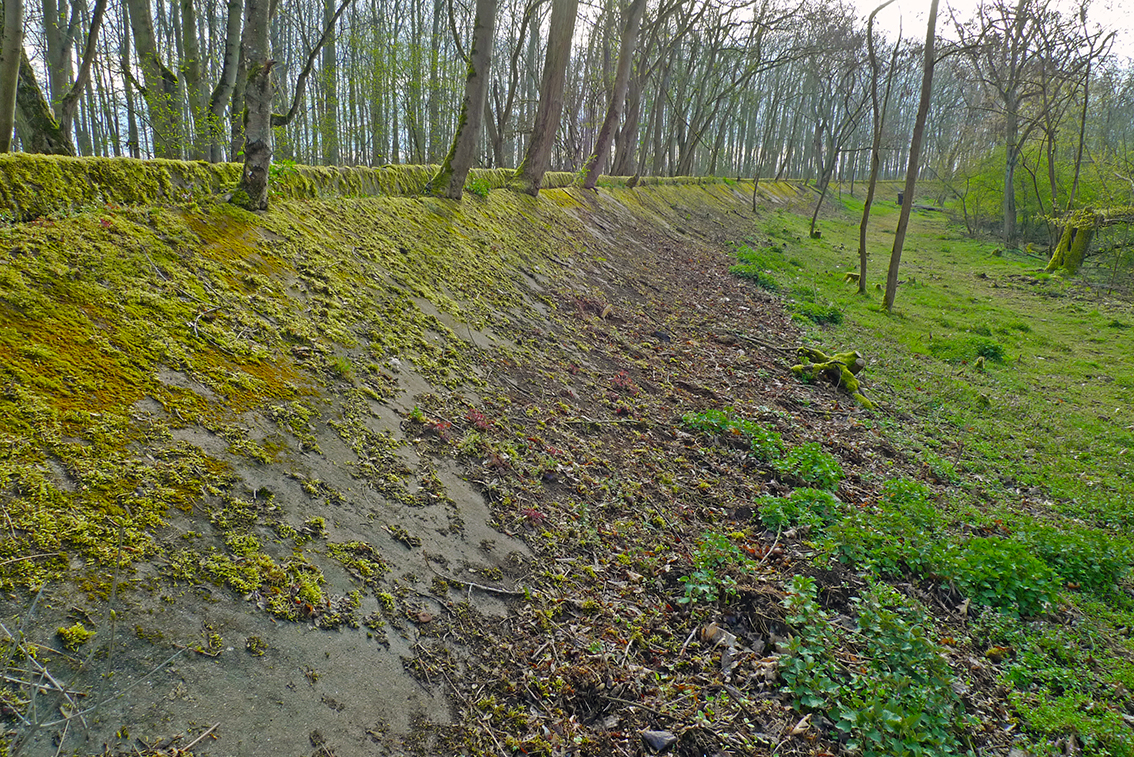
The Opelbahn today: Nature has reclaimed the area, the steep curves are still clearly visible.
May 2021
